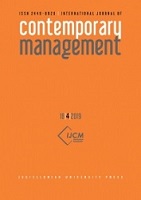Using New Media in Planning and Managing the Revitalization Process – By the Example of Cracow
Using New Media in Planning and Managing the Revitalization Process – By the Example of Cracow
Author(s): Kamilla NoworólSubject(s): Media studies, Civil Society, Governance, Public Administration, Management and complex organizations, Rural and urban sociology
Published by: Wydawnictwo Uniwersytetu Jagiellońskiego
Keywords: revitalization; urban regeneration; e‑public participation; public management; new media;
Summary/Abstract: Background. The range of operation of e‑participation is constantly widening. The commonness of using e‑participation in public management makes one think about its effectiveness in implementing complex processes, particularly those occurring in cities, as the urban revitalization. This process traditionally benefits from wide stakeholder participation based on face‑to‑face relations. Research aims. The aim of the article is to present – in the context of literature – the experiences of the Cracow City Hall in the range of using e‑participation of the residents in the process of planning and implementing revitalization. The basic question is whether it is possible to use e‑participation instead or to a limited extent of traditional instruments based on face‑to‑face contacts. Methodology. The article is based on the results of a desk research (documents of the city of Cracow, the results of research and analyses in the field of interest), website analysis and social media profiles as well as focus group interview conducted by the author in June 2019 with the employees of the Revitalization Office at the Cracow City Hall. Key findings. By the example of Cracow, on the basis of literature research as well as own research and experience gained by designing several revitalization programmes, the author has claimed that face‑to‑face contact is inestimable. However, city government and its officials cannot avoid the necessity of conducting part of the communication process in social media. The example of Cracow has indicated some weaknesses and dangers which a city may face while using these tools the author has shown.
Journal: International Journal of Contemporary Management
- Issue Year: 18/2019
- Issue No: 4
- Page Range: 33-52
- Page Count: 20
- Language: English

